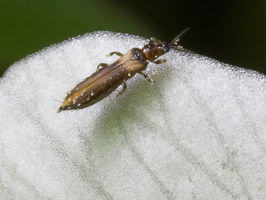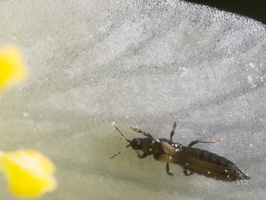- sort orderDefault
Photo title, A → Z
Photo title, Z → A
Date created, new → old
Date created, old → new
Date posted, new → old
✔ Date posted, old → new
Visits, high → low
Random - Google Map
- map
 home / Insecta · vabzdžiai / Thysanoptera · tripsai
home / Insecta · vabzdžiai / Thysanoptera · tripsai

Thysanoptera · tripsai
- thrips
- Fransenflügler
- tripsai
- tripši, bārkšspārņi
- wciornastki, przylżeńce
https://en.wikipedia.org/wiki/Thrips
Thrips are a functionally diverse group; many of the known species are fungivorous. A small proportion of the species are serious pests of commercially important crops. Some of these serve as vectors for over 20 viruses that cause plant disease. Many flower-dwelling species bring benefits as pollinators, with some predatory thrips feeding on small insects or mites. In the right conditions, such as in greenhouses, species can exponentially increase in population size and form large swarms because of a lack of natural predators coupled with their ability to reproduce asexually, making them destructive to crops. Their identification to species by standard morphological characteristics is often challenging.
Smulkūs vabzdžiai šeriuotais sparnais. Kūnas 0,5-5 mm ilgio, verpstiškas, gležnas. Sparnai plėviški, siauri, tiesūs, jų yra 4. Kojos bėgiojamosios. Tripsams būdinga pilna metamorfozė. Inkstiškos formos kiaušinėliai sudedami arba ant augalo paviršiaus, arba į plyšelius, kuriuos augalo paviršiuje kiaušdėčiu prapjauna patelė. Lervos išsirita maždaug per tris dienas. Suaugėliai lytinę brandą pasiekia per 1–4 dienas po išsiritimo iš lėliukės. Tripsai prastai skraido, bet gali būti toli nunešti vėjo.
Dalis tripsų minta augalais ir laikomi kenkėjais. Maitindamiesi jie praduria augalo ląsteles ir išsiurbia jų turinį. Tripsai platina augalų ligas. Daugelis maitinasi grybais, žiedadulkėmis. Yra plėšrių, minta kitais vabzdžiais ir erkėmis.

